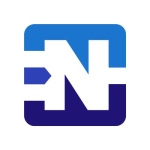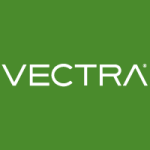What is most valuable?
It does a lot for you for intrusion protection and as an antivirus. The threat management bundle is worth the money. You don't need another company to monitor your web traffic for you. You can do everything yourself on the firewall. You restrict your own black list for people on the firewall. You don't need to pay some other company for another product to do that for you. The firewall can do that for you. So, it's an easy-to-use product for people to be independent. They don't need to rely on other vendors to do what the firewall can do. They can do everything.
The GUI is good. I'm really happy with the ease of use of the firewall. Fortinet's support is also great.
What needs improvement?
I don't really have anything negative to say as far as Fortinet firewalls are concerned. If anything, they can support a user a little bit better. They can stop being so time-sensitive about how much time the support call has taken, and they can help you do it yourself.
For how long have I used the solution?
I've had different models of Fortinet since 2009. They all are physical appliances. I had 300As, and now I'm on 300Ds. I've got a remote site with a different model, which probably is 60F. They are great little firewalls, and for bigger size places, they have 300 models.
I don't have virtual appliances. I don't have a virtual infrastructure. I have an older virtual environment with Hyper-V, and the servers are not up-to-date. It was a money thing. So, it was better to go with the appliance itself.
What do I think about the stability of the solution?
I'm happy with what they got. It is a great product. Sometimes, you're going to get a lemon—the way it initially happened with FortiAuthenticator 300F—but that doesn't happen very often.
If there is a problem, the next business day, they send it and get the replacement, and they help me configure it.
Buyer's Guide
Fortinet FortiGate
December 2025
Learn what your peers think about Fortinet FortiGate. Get advice and tips from experienced pros sharing their opinions. Updated: December 2025.
879,310 professionals have used our research since 2012.
What do I think about the scalability of the solution?
In terms of its users, everybody uses the firewall because they're going out. That's our egress point. So, there are about 20 users for that. We have a dozen IPsec tunnels with which we connect to different companies. So, security is a big part of it. I also have a remote location with about 10 users who use a different firewall.
We probably won't be increasing its usage. Now that I got Authenticator, it nicely compliments the Fortinet firewall. The size of the company isn't going to grow any more than what it is. So, we're good.
How are customer service and support?
Their support is great, but it also depends on who you get for support. From the support perspective, they can help you do it yourself, which is always more beneficial to both parties. They can stop being so time-sensitive about the call duration and let a user help himself a little bit more.
It takes time to study this stuff, and I don't always have time to do it. So, I'm looking for a quick answer because I get interrupted all the time during work. I don't always have the time to study something and figure it out. So, I have to call them, but I don't always get somebody who really knows what they are doing. They don't know deep enough to help you. They're troubleshooting with you, and that's the difference between Level 1 and Level 2 support.
Which solution did I use previously and why did I switch?
When I first got here in this job in 2007, they had Cisco ASA Firewall, but it was too cryptic. You had to enter all these CLI commands for a configuration. It also didn't do everything that Fortinet could do. It was very limited, and it wasn't easy to use. I know what I want to do, and I don't have to learn a special language in order to do it. I just want to be able to use some basic programming code that they have put into the firewall and use the GUI interface with it to actually visualize what I am looking at. Some of the Cisco products are not visual enough. That was one of the reasons I stayed away from it. Cisco is also very high-priced. They price themselves out of business a lot of times for equipment, but Fortinet is just great.
I've also used SonicWall before. It was okay, but it is better for bigger places. I was looking for a midrange-size firewall for a couple of hundred users, and I felt Fortinet was the right fit.
How was the initial setup?
Its deployment and maintenance are easy.
What about the implementation team?
I pretty much used the support from Fortinet to do it. They're good about their support. I did it myself by being a nuisance to Fortinet. I kept calling them to ask questions. They had to remote on to it and see you do something you don't know how to do.
What's my experience with pricing, setup cost, and licensing?
It was probably about $2,500 per firewall. It was all included. It included support, services, threat management software, and 24/7 FortiCare on it. Cisco products are more expensive.
What other advice do I have?
Fortinet has got great firewalls. They do everything. They do FortiTokens for two-factor. They do the IPsec VPNs, SSL VPNs. They have a great GUI for you to know, but you still got to know the CLI commands.
I would rate it a 10 out of 10. It does its job, and it is easy to use. The support is great.
Which deployment model are you using for this solution?
On-premises
Disclosure: My company does not have a business relationship with this vendor other than being a customer.


















